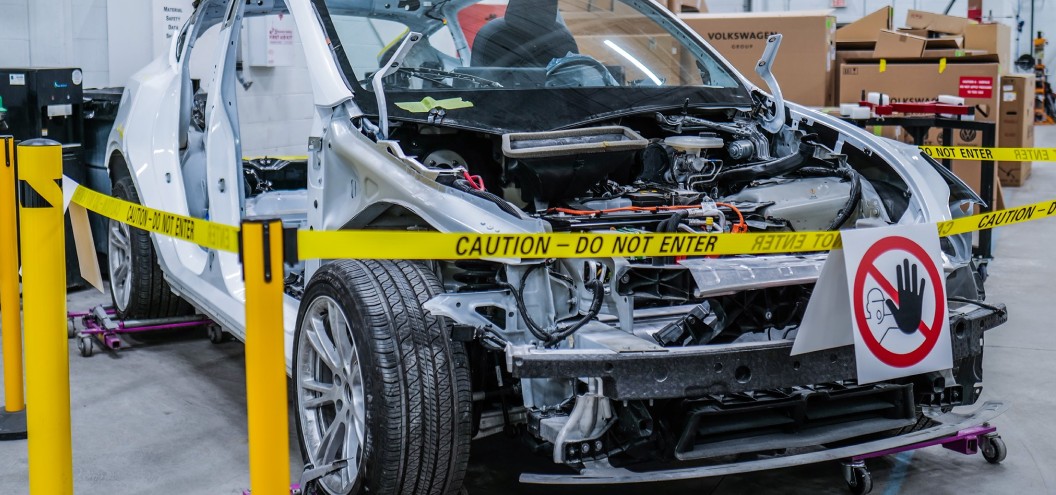Accidents are an unfortunate reality on the road, and while we all prioritize safety when choosing a vehicle, collisions can still occur. Electric vehicles (EVs) are no exception, and while they boast impressive safety records and advanced safety features like adaptive cruise control and lane departure warnings, accidents involving EVs raise unique repair considerations. Just like conventional cars, EVs are designed to protect occupants in a crash, but when it comes to post-accident repairs, understanding what should I repair in an electric car becomes crucial for both safety and vehicle longevity.
Unique Aspects of Electric Car Repair
Electric vehicles operate with high-voltage systems that are generally seamless and safe during normal use. However, accidents can compromise these systems. High-voltage cables, often identified by bright orange coloring, can be severed or damaged in a collision. This poses a significant risk to anyone handling the vehicle without specialized training and protective gear. Therefore, one of the first things to consider regarding what should I repair in an electric car is the high-voltage electrical system.
Not every auto repair shop is equipped to handle the complexities of EV repair. Specialized training, infrastructure, and equipment are necessary to safely and effectively repair the high-voltage systems in EVs and plug-in hybrids. This is not only about restoring your vehicle to its pre-accident condition but also ensuring the safety of the technicians working on it.
A critical repair procedure unique to electric vehicles after a crash is the safe handling of the high-voltage battery. These batteries, if mishandled, can pose a fire risk. Repair protocols include properly isolating and quarantining the battery, removing it using specific procedures, and maintaining its charge level to ensure optimal performance once reinstalled. This requires specialized equipment, potentially including battery quarantine rooms and dedicated charging and maintenance tools.
Multi-Material Bodywork Considerations
Another factor influencing what should I repair in an electric car is the vehicle’s construction. To counter the weight of heavy battery packs and maximize driving range, many EVs utilize advanced multi-material structures. These structures often incorporate aluminum, carbon fiber, and high-strength steel, making them more complex than traditional steel frames found in gasoline cars. For example, Tesla models often feature aluminum-intensive designs, while BMW i-series vehicles use a “carbon core” combining steel, aluminum, and carbon fiber.
Repairing these advanced materials requires specialized tools, equipment, and techniques. Manufacturers provide specific training to certified body shops to ensure these complex structures are repaired correctly, maintaining the vehicle’s structural integrity and safety. Therefore, when considering what should I repair in an electric car, assessing damage to these specialized body materials is essential.
Electronic Systems and Recalibration After a Crash
Beyond the physical damage, what should I repair in an electric car also extends to its sophisticated electronic systems. Modern EVs are packed with control modules and active safety systems that need careful attention after a collision. This includes maintaining the high-voltage battery’s condition during the repair process to prevent it from becoming inoperable. Furthermore, all of the vehicle’s electronic control modules must be assessed and ensured they are functioning harmoniously.
According to industry sources like Body Shop Business, EV battery removal and installation is a complex task requiring specialized equipment like scissor-lift platforms and mobile battery tables. Precision is key, often necessitating alignment dowels and even borescopes to verify connector alignment before reassembly.
Finally, a crucial aspect of what should I repair in an electric car involves recalibrating the vehicle’s advanced safety systems. Systems like lane departure warning, adaptive cruise control, and automatic emergency braking rely on cameras, radar, and sensors that can be misaligned in a collision. These systems require precise recalibration using manufacturer-specific tools and procedures, sometimes even requiring dedicated calibration rooms with specialized test patterns. Ensuring these systems are properly recalibrated is vital for restoring the vehicle’s safety features to their original functionality.
Conclusion: Prioritizing Expertise in Electric Car Repair
In conclusion, determining what should I repair in an electric car after an accident involves a deeper understanding than traditional vehicle repairs. Electric vehicles are intricate machines constructed with advanced materials and equipped with complex high-voltage and electronic systems. Repairing them requires specialized knowledge, equipment, and adherence to manufacturer-specified procedures.
For optimal peace of mind and to ensure your EV is returned to its factory safety specifications, choosing a repair facility certified by your vehicle’s manufacturer is highly recommended. These certified shops undergo specific training and are equipped to handle the unique challenges of EV repair, providing assurance that your vehicle will be repaired correctly and safely for continued reliable operation.

